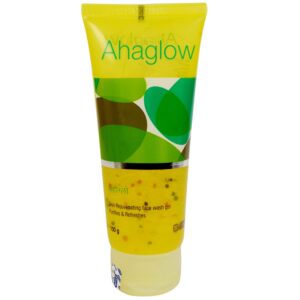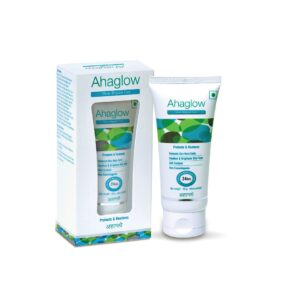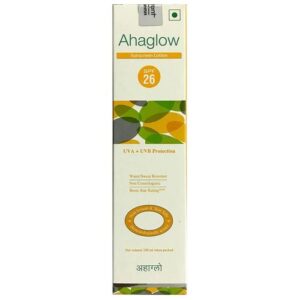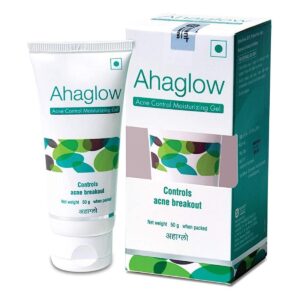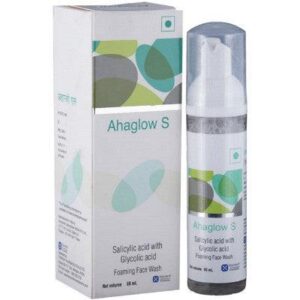SALICYCLIC ACID + GLYCOLIC ACID + ALOE VERA
Salicyclic Acid: Salicylic acid is a medication that belongs to the class of drugs known as salicylates. It is derived from the bark of the willow tree and has been used for centuries to treat various conditions. Today, it is primarily used as a topical treatment for skin conditions such as acne, psoriasis, and warts.
The mechanism of action of salicylic acid is not entirely understood, but it is known to have keratolytic and exfoliative properties. It works by breaking down the proteins that hold the outer layer of skin cells together, helping to remove dead skin cells and unclog pores. This process helps to reduce inflammation, redness, and swelling associated with certain skin conditions.
Salicylic acid is available in various formulations, including creams, gels, lotions, shampoos, and even plasters for localized treatments. The strength and frequency of application may vary depending on the condition being treated. Typically, it is recommended to apply a thin layer of the medication to clean, dry skin and gently rub it in. It is important to follow the instructions provided by the healthcare professional or the product label.
As with any medication, salicylic acid may cause side effects. These can include mild skin irritation, redness, and peeling. Some individuals may be more sensitive to salicylic acid, experiencing a burning or stinging sensation. It is advised to discontinue use if these side effects become severe or persistent. In rare cases, systemic absorption of salicylic acid can occur, leading to symptoms such as dizziness, ringing in the ears, and difficulty breathing. If any of these symptoms occur, medical attention should be sought immediately.
It is important to note that salicylic acid should not be used on open wounds, broken skin, or irritated skin. It is also not recommended for use during pregnancy, as it may be absorbed into the bloodstream and potentially harm the fetus. It is always best to consult with a healthcare professional before using salicylic acid or any other medication to ensure it is safe and appropriate for your specific condition.
Glycolic Acid: Glycolic acid is a type of alpha-hydroxy acid (AHA) that is commonly used in skin care products. It is derived from sugar cane and has a small molecular size, allowing it to easily penetrate the skin.
Use:
Glycolic acid is primarily used as an exfoliating agent and is often found in products such as chemical peels, face cleansers, and toners. It is used to improve the appearance of the skin by reducing the signs of aging, such as fine lines, wrinkles, and hyperpigmentation. It can also help with acne by unclogging pores and promoting cell turnover.
Mechanism of Action:
Glycolic acid works by loosening the bonds that hold dead skin cells together, allowing them to be shed more easily. This process helps to unclog pores, smooth the skin’s texture, and promote the growth of new, healthy skin cells. It also stimulates the production of collagen, a protein that helps to maintain the skin’s elasticity.
Dose:
The concentration of glycolic acid in skin care products can vary. Higher concentrations are typically used in professional treatments, such as chemical peels, while lower concentrations are found in over-the-counter products. The specific dose and application instructions will depend on the product being used, so it is important to follow the instructions provided by the manufacturer or healthcare professional.
Side Effects:
Glycolic acid can cause some side effects depending on the individual’s skin sensitivity and the concentration of the product used. Common side effects may include redness, irritation, stinging, and peeling of the skin. These side effects are usually mild and temporary, but individuals with sensitive skin may experience more severe reactions. It is also important to use sun protection when using products containing glycolic acid, as it can increase the skin’s sensitivity to the sun and the risk of sunburn. It is advisable to perform a patch test before using any product containing glycolic acid to check for potential allergic reactions or skin sensitivities.
Aloe Vera: Aloe Vera is a medicinal plant commonly used for its health benefits. It is available in various forms for use, such as gels, creams, lotions, and supplements. Its main active ingredient is a thick gel-like substance found in the inner portion of the plant’s leaves.
Uses:
Aloe Vera is primarily used for its soothing and healing properties on the skin. It is often used to treat various skin conditions such as burns, sunburn, wounds, psoriasis, acne, and eczema. It is believed to accelerate the healing process by promoting collagen synthesis and reducing inflammation. Moreover, Aloe Vera is also used as a natural laxative and may sometimes be taken orally to relieve constipation.
Mechanism of Action:
The mechanism of action of Aloe Vera is not well-understood, but it is believed to have several properties that contribute to its therapeutic effects. It contains polysaccharides that stimulate the immune system, promoting tissue repair and reducing inflammation. Aloe Vera also contains vitamins, minerals, amino acids, and enzymes that have antioxidant and antibacterial properties, further aiding in the healing process.
Dose:
The dosage of Aloe Vera varies depending on the form and purpose of use. For topical applications, a thin layer of the gel or cream can be applied to the affected area 2-3 times a day as needed. As an oral supplement for constipation, a recommended daily dose is usually around 100-200 mg of Aloe Vera extract in a concentrated form. However, it is important to follow the instructions on the product label or consult with a healthcare professional for specific dosing instructions.
Side Effects:
In general, Aloe Vera is considered safe when used topically or taken orally in recommended doses. However, some people may experience mild side effects, including skin irritation or allergic reactions when applying Aloe Vera topically. When taken orally, Aloe Vera may cause abdominal cramping, diarrhea, electrolyte imbalances, and a laxative effect if consumed in excessive amounts.
It is important to note that Aloe Vera should not be taken orally during pregnancy or while breastfeeding, as it may have uterine-stimulating effects. Additionally, individuals with underlying medical conditions, such as intestinal disorders or diabetes, should exercise caution and consult with a healthcare professional before using Aloe Vera as a supplement.

